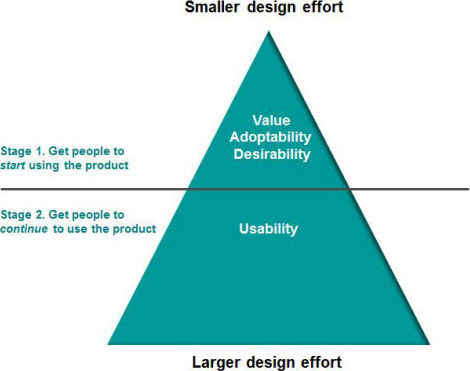The most critical interaction with a product is the first one. First impressions last. My first experience with an Apple Computer was dreadful and I haven’t touched one since. I have become a lifelong Windows/Unix user instead. I know instinctively that Apple offers a great user experience; people keep telling me (often at rather unnecessary length) about it. I don’t care; once bitten, twice shy.
The First Encounter

Author/Copyright holder: CNET. Copyright terms and licence: All rights reserved Img source
The first encounter with a product is often not the first time that a product is used. It might be in a store or in an advert. This is where brand, people and marketing combine to deliver an initial experience. This wasn’t true for my Apple (which was on my desk the day I started work at that company) but it’s true for most products.
The first encounter, if delivered properly, should lead to first use. Both of these things matter.
The Critical Parts of the User Experience at the First Encounter
Fortunately, human beings are fairly simple creatures at heart and while there are many ways to deliver a great user experience; most people are going to need fairly similar reassurances and inputs to move from that encounter to usage:
- They want to know what exactly it is that you are selling.This is should be incredibly obvious but it often isn’t. You don’t want to get caught up so much in selling brands and experiences that you neglect product information.
- They want to know what about your product is going to be worth investing time and money into it. What’s your value proposition? What differentiates you from your competitors? What’s the benefit to the person shelling out the cash?
- They want to know and see that it will be relatively easy for them to start using that product. Obviously, this is relative to the customer themselves. I bought my first real DSLR camera 6 months ago – it took 20 seconds to take the first photo. It will take 20 years before I master it (I don’t spend enough time practicing). You can’t be responsible for the latter but delivering a simple starting point means that I didn’t take my camera back to the shop immediately too.
- They want prolonged value. It is difficult to run a business that works on quick hit sales with no intention of serving the customer’s needs in the long run. It’s not impossible but it is difficult. It’s much better to have a clear understanding of how you will bring the customer back again and again prior to their first encounter. It’s something that should be easy to communicate. Years ago, I worked in PC sales. Back then computers were still very much a luxury item to have at home. For complete novices, I’d concentrate on selling them a simple, basic system. Then I’d explain how, once they got the hang of it, they could extend that system. More than 90% of my clients came back to buy from us again and often more than once.
Summary
First impressions last. If you want to ensure that your user experience is solid – it needs to extend beyond the product and into that first encounter as often as possible.
Header Image: Author/Copyright holder: UX Matters. Copyright terms and licence: All rights reserved. Img












